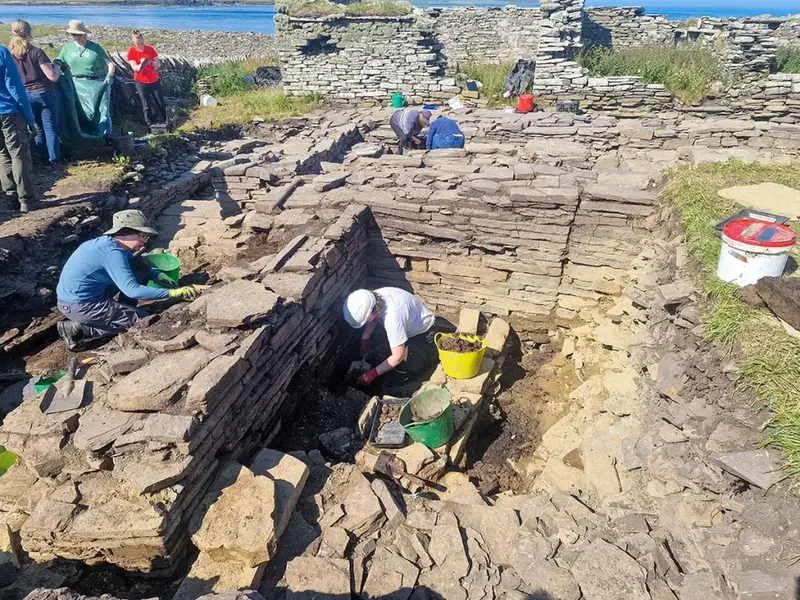A remarkable discovery was made on the island of Rousay in the Orkney archipelago (Scotland) by aspiring archaeologist Katie Joss. The student from the Institute of Archaeology at the University of the Highlands and Islands (UHI) was working with colleagues on excavations near Skaill Farm, where the team was investigating a series of large medieval structures.
During the second week of work, Katie Joss unexpectedly stumbled upon a piece of ancient sculptural art: a masterfully carved head made of red sandstone, featuring strands of hair, closed eyes, and a barely noticeable carefree smile. This stunning find has provided scholars with clues about the medieval past of the area. The head may be linked to the impressive local structures, such as St. Magnus Cathedral.
“This is an incredibly exciting . Over the years of excavations at Skaill and the nearby tower of Virk, we have uncovered numerous finely crafted fragments of red sandstone, but nothing like this head has been found among them,” said Dr. Sarah Jane Gibbon, the excavation leader.

What else is known about the stone head?
The red sandstone with yellow speckles from which the head is carved likely originates from the island of Eday. This is the same material used to construct some of the local buildings, including the ancient parish church of St. Mary.
The excavation leader noted that the closed eyes, asymmetrical eyebrows, and gentle smile convey the individuality of this figure’s character much more elegantly than many similar carved works from the same .
Archaeologists have also pointed out the broken nose. It’s possible that the head was intentionally damaged many years ago, or it could have been accidentally harmed, as reported by Arkeonews. “The other part of the head is intact, which makes it even more mysterious,” Dr. Gibbon said.
Katie Joss discovered the sandstone head in a corner of a later addition to the main complex—a residential building constructed between two large medieval structures. The team suggested that these buildings, including a square and rectangular structure with walls a meter thick, are part of a late medieval farm complex. The two-story rectangular building with external stairs may have served as a large storage facility or administrative house.
believe there may be a connection between this carved head and the church’s stone masonry. After careful comparison, Dr. Gibbon found that the artifact’s size and shape most closely match a sculpture embedded in the window frame of the southern aisle of St. Magnus Cathedral.
Dr. Gibbon plans to continue her research, focusing on a comparative analysis of the discovered head with other medieval carved works from the Orkney Islands. Her team will also work on accurately dating this enigmatic symbol of the archipelago’s layered past.
